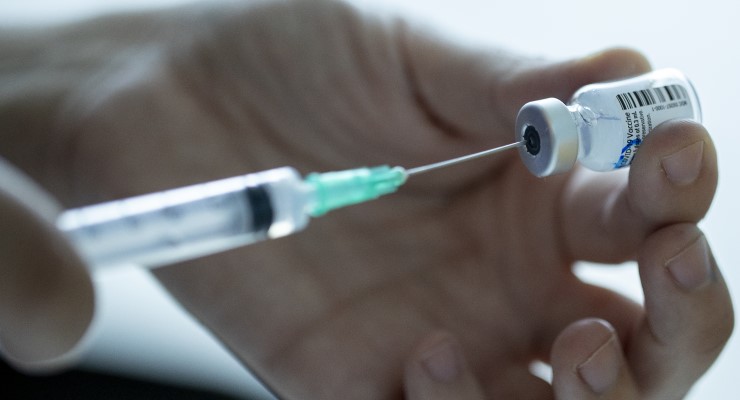
Emails released under freedom of information laws showed Health Minister Greg Hunt didn’t sign a contract with Pfizer for COVID-19 vaccines until months after he was first contacted by the company’s representatives on June 30.
They suggested Australia act fast, with millions of doses to be available at the end of the year. But in a “not a race” approach, Australia didn’t sign a deal until November, five months later.
Had Australia secured a deal in July — when the UK finalised its — what impact would it have had? Modelling by Monash University adjunct professor Michael Georgeff, a mathematician and leading Australian expert on artificial intelligence and health technology, shows New South Wales would be coming out of lockdown with more than 100 lives saved.
What are the assumptions?
Georgeff modelled two scenarios. In the first, he assumed 10 million extra Pfizer doses would have arrived and been split across states based on population, with 32% distributed to NSW. Assuming all doses were administered by the beginning of August, he found by the end of August the reproductive rate of the Delta variant — how many people the average infected person spreads the virus to — would have dropped to less than one.
“The model shows we would end up with about 20% of the cases that NSW has had to date without Pfizer — an 80% reduction,” he said.
“The NSW lockdown would still have been necessary but daily cases would have never exceeded 150 per day and total cases to September 8 would be about 6000 instead of 32,000.”

About 10% of those who caught COVID since the June outbreak have been admitted to hospital, about 20% of whom end up in ICU.
If Pfizer had been available, hospitalisations would be about 80% less than now, with fewer than 600 people hospitalised instead of 3000. Because of the difference in efficacy between AstraZeneca and Pfizer at preventing serious illness, these numbers would probably have dropped slightly further. The model doesn’t look at differences in age groups.
About 120 patients would have ended up in ICU instead of more than 500.
Deaths too would have dropped. There have been 222 deaths from the 43,779 cases, meaning fatality is at 0.47% in this latest outbreak.
“Under the modelling and with the assumptions made, the lack of Pfizer has resulted in up to 150 needless deaths to date,” Georgeff said.
Even if Pfizer uptake was slower and all doses were in arms by the beginning of September, case numbers and hospitalisations would have dropped by 65% and 120 lives saved.
Applying the model to Victoria showed it wouldn’t have escaped its sixth lockdown, but it would have ended now with a similar reduction in infections and hospitalisations. There is a chance limited infections in NSW would have meant the Victorian outbreak may have never happened.

Missed opportunity
Monash University epidemiologist James Trauer looked at the modelling and says the assumptions stacked up.
“These seem reasonable or even conservative,” he said. “It is likely that Pfizer has a greater effect on onward transmission and is likely to substantially reduce the reproduction number for those who receive the vaccine.”
Most if not all the nine people who died in Victoria may have even been spared, he says, with at-risk people vaccinated before the outbreak hit. But the modelling did not take into account restrictions being eased earlier in response to the lower infection rates, which could have caused a surge.
“The flattening of Sydney’s epidemic recently and the failure of the virus to take hold in several intermediate-risk settings (like regional towns in NSW and Victoria) is attributable to protection through vaccination,” he said.
“We missed an incredible opportunity to be protected before these outbreaks occurred, which would have averted the need for these most recent lockdowns. They are really the lockdowns we didn’t have to have.”








Crikey is committed to hosting lively discussions. Help us keep the conversation useful, interesting and welcoming. We aim to publish comments quickly in the interest of promoting robust conversation, but we’re a small team and we deploy filters to protect against legal risk. Occasionally your comment may be held up while we review, but we’re working as fast as we can to keep the conversation rolling.
The Crikey comment section is members-only content. Please subscribe to leave a comment.
The Crikey comment section is members-only content. Please login to leave a comment.